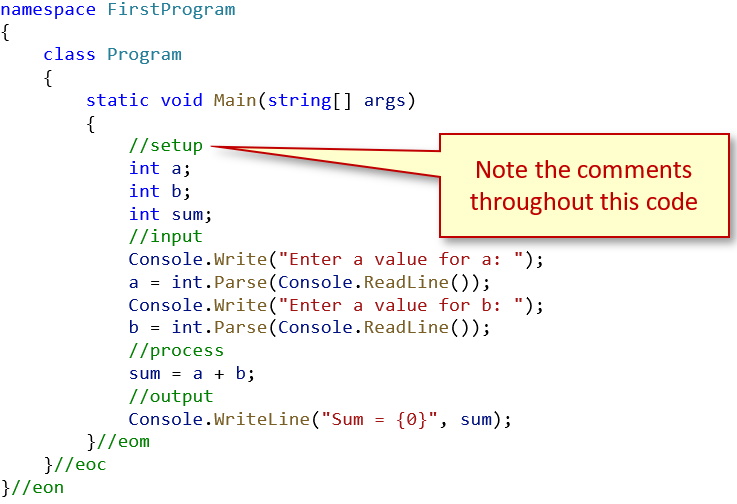CPSC1012 – Coding Standards
Naming Conventions
All names used in your code will be semantically named; named for their use for the problem you are solving. The table below shows the correct naming structure that MUST be adhered to.
| Type | Convention | Example |
|---|---|---|
| Variables | Camel cased | int firstName; |
| Classes | Pascal cased | class StudentData |
| Methods | Pascal cased | static void DisplayData() |
| Constants | Pascal cased | const double GstRate = 0.05; |
Coding Structure
The structure of your code must be such that it is easily read by humans. There are basically three rules you will follow in this class:
Indentation
All code will be correctly indented. This is normally not a problem if you let Visual Studio work for you. Each block level, inside the curly braces, {…}, will be indented (normally 4 spaces, or a tab).
Whitesapce
Excessive whitespace, i.e., blank lines, do two things:
- Add unnecessary size to your code files
- Makes it harder to read and see where your working, or non-working, code is.
Commenting
There are three rules that you will follow for commenting:
-
Initial Comment Block: At the top of EVERY code file, just above the
namespacecode line, you will have a comment block that looks like:/* Purpose: What is the purpose of this application? Input: What are the inputs? Output: What are the outputs? Written By: Your Name Last Modified: Date of the last modification */Note: Replace the questions, name, and date with appropriate text.
-
Other Commenting: You will need to sufficiently document your code, especially sections where the code logic is a bit complex; this serves to help you, and your instructor, in understanding and debugging your code. For example:

Note: The initial comment block for this sample might look like:
/* Purpose: Prompt the user for 2 numbers and display the sum Input: two numbers Output: sum Written By: Allan Anderson Last Modified: May 26, 2022 */ -
Commented Code: It is a bad practice to have code lines commented out. This indicates that you have experimented, or used a Trial-and-Error method, to solve the problem. It can also add confusion and adds size to your code files. If your submitted assignment has code commented out, you will receive a mark deduction.